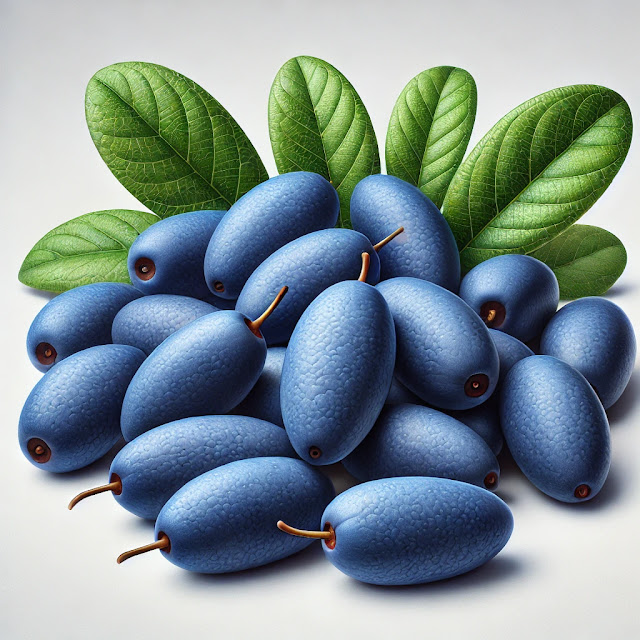Cranberries: The Tangy Superfruit for Boosting Your Health
Overview:
Cranberries, with their vibrant red color and tart flavor, are a popular fruit known for their health benefits. They are often consumed in juices, dried form, or as part of festive dishes, but cranberries also stand out as a nutrient-dense superfood. Their unique taste and numerous health advantages make them a valuable addition to any diet.
Calories and Key Nutrients (per 100g):
A 100g serving of raw cranberries contains approximately 46 calories, making them a low-calorie fruit option. They are rich in vitamin C, an essential nutrient for immune function and skin health. Cranberries also contain fiber, vitamin E, and manganese, along with a variety of antioxidants such as flavonoids and polyphenols. Compared to fruits like grapes or apples, cranberries are particularly known for their potent antioxidant properties, which help combat oxidative stress and inflammation.
Health Benefits:
Cranberries are renowned for their role in promoting urinary tract health, primarily due to the presence of proanthocyanidins, which prevent harmful bacteria from sticking to the bladder walls. The antioxidants in cranberries also help reduce inflammation and lower the risk of chronic diseases, such as heart disease. Additionally, their vitamin C content strengthens the immune system, while the fiber aids digestion and supports heart health by regulating cholesterol levels.
Proper Consumption Methods:
Cranberries can be consumed fresh, though their tartness often makes them more enjoyable when paired with other ingredients. Dried cranberries are a popular snack and can be added to salads, oatmeal, or baked goods for a burst of flavor. Cranberry juice is another common form, though it’s important to choose varieties with low or no added sugar. Cranberries can also be cooked into sauces, jams, or even savory dishes, such as pairing them with meats like turkey or chicken.
Tasty Ways to Eat Cranberries (Recipes):
One simple and delicious recipe is homemade cranberry sauce. Cook fresh cranberries with a bit of sugar, orange zest, and cinnamon to create a tangy-sweet sauce that complements holiday meals or can be used as a topping for yogurt or pancakes. Another creative idea is a cranberry smoothie: blend fresh or dried cranberries with bananas, spinach, and almond milk for a nutritious and refreshing drink.
Cautions When Eating Cranberries:
While cranberries offer many health benefits, it’s important to consume them in moderation, especially in processed forms like juices or dried cranberries, which often contain added sugar. Excessive cranberry consumption can also lead to gastrointestinal discomfort due to their high acidity. Additionally, people taking blood thinners should be cautious, as cranberries may interact with these medications due to their vitamin K content.
Comparing Cranberries to Other Fruits:
Compared to blueberries and raspberries, cranberries stand out for their higher concentration of antioxidants, particularly proanthocyanidins, which are less common in other berries. While blueberries are known for their cognitive health benefits, cranberries are particularly celebrated for promoting urinary tract health. Both fruits, however, are great sources of vitamins and antioxidants that contribute to overall well-being.
Who Should Eat Cranberries and Who Should Avoid Them:
Cranberries are ideal for people looking to improve their urinary tract health or boost their immune system. They are also a great option for those on a low-calorie diet. However, individuals who take certain medications, such as blood thinners, or those who are sensitive to acidic foods should limit their cranberry intake to avoid potential side effects.
Interesting Stories or Facts:
Did you know that cranberries were originally used by Native Americans not only for food but also for medicinal purposes and as a natural dye? The Pilgrims were introduced to cranberries by the indigenous people, and they have since become a staple in American holiday traditions, particularly in Thanksgiving dishes.
Cranberry Culture Around the World:
In the United States, cranberries are commonly consumed during Thanksgiving as a sauce or in stuffing. In Europe, they are often used in sauces and desserts, while in parts of Scandinavia, cranberries are enjoyed in jams and drinks. In Russia, cranberry juice, known as "mors," is a traditional beverage believed to have health benefits, especially for colds and flu.
Scientific Research on Cranberries:
Numerous studies have highlighted the potential benefits of cranberries for urinary tract infections (UTIs), particularly for women. Research suggests that regular consumption of cranberries may reduce the recurrence of UTIs. Additionally, studies have shown that the antioxidants in cranberries may help lower blood pressure and improve heart health by reducing oxidative stress and inflammation in the arteries.
Conclusion:
Cranberries are a nutrient-dense fruit that offers numerous health benefits, from promoting urinary tract health to supporting heart health and immunity. However, as with any food, moderation is key, and it’s essential to be mindful of added sugars in processed forms.
This information may not be entirely accurate, so if you have any medical conditions, please consult a doctor before consuming cranberries.










Comments
Post a Comment